Tag #sequence chart
95 papers:
 ICPC-2018-LyuNK #diagrams #named #tool support
ICPC-2018-LyuNK #diagrams #named #tool support- SDexplorer: a generic toolkit for smoothly exploring massive-scale sequence diagram (KL, KN, TK), pp. 380–384.
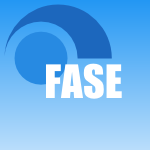 FASE-2017-AlvinPM #diagrams #generative #named #uml
FASE-2017-AlvinPM #diagrams #generative #named #uml- StaticGen: Static Generation of UML Sequence Diagrams (CA, BP, SM), pp. 173–190.
 CSEET-2016-SrinivasanLY #comprehension #diagrams #object-oriented #programming #using
CSEET-2016-SrinivasanLY #comprehension #diagrams #object-oriented #programming #using- Enhancing Object-Oriented Programming Comprehension Using Optimized Sequence Diagram (MS, YL, JY), pp. 81–85.
 ICPC-2016-SrinivasanYL #case study #comprehension #diagrams
ICPC-2016-SrinivasanYL #case study #comprehension #diagrams- Case studies of optimized sequence diagram for program comprehension (MS, JY, YL), pp. 1–4.
 SAC-2015-KimL #diagrams #qvt #using
SAC-2015-KimL #diagrams #qvt #using- Pattern-based transformation of sequence diagrams using QVT (DKK, BL), pp. 1492–1497.
 ICEIS-v2-2014-MarcolinoOG #approach #diagrams #effectiveness #towards #variability
ICEIS-v2-2014-MarcolinoOG #approach #diagrams #effectiveness #towards #variability- Towards the Effectiveness of the SMarty Approach for Variability Management at Sequence Diagram Level (AM, EAOJ, IMdSG), pp. 249–256.
 SLE-2014-KaufmannKPSW #debugging #diagrams #satisfiability #state machine
SLE-2014-KaufmannKPSW #debugging #diagrams #satisfiability #state machine- A SAT-Based Debugging Tool for State Machines and Sequence Diagrams (PK, MK, AP, MS, MW), pp. 21–40.
 CSMR-2013-ScannielloGT #comprehension #diagrams #source code
CSMR-2013-ScannielloGT #comprehension #diagrams #source code- An Early Investigation on the Contribution of Class and Sequence Diagrams in Source Code Comprehension (GS, CG, GT), pp. 367–370.
 GT-VMT-2013-GreenyerBM #diagrams #specification
GT-VMT-2013-GreenyerBM #diagrams #specification- The ScenarioTools Play-Out of Modal Sequence Diagram Specifications with Environment Assumptions (JG, CB, VPLM).
 SEKE-2013-YoonMPP #diagrams #reverse engineering
SEKE-2013-YoonMPP #diagrams #reverse engineering- Reverse Engineering of Sequence Diagrams by Merging Call Trees (SY, SM, SP, SP), pp. 368–374.
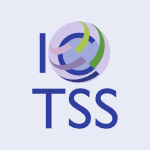 ICTSS-2013-FariaPC #consistency #diagrams #testing #tool support #uml
ICTSS-2013-FariaPC #consistency #diagrams #testing #tool support #uml- Techniques and Toolset for Conformance Testing against UML Sequence Diagrams (JPF, ACRP, MVdC), pp. 180–195.
 REFSQ-2012-RaspotnigO #analysis #case study #diagrams
REFSQ-2012-RaspotnigO #analysis #case study #diagrams- Supporting Failure Mode and Effect Analysis: A Case Study with Failure Sequence Diagrams (CR, ALO), pp. 117–131.
 SAC-2012-Longuet #testing
SAC-2012-Longuet #testing- Global and local testing from Message Sequence Charts (DL), pp. 1332–1338.
 SLE-2012-WidlBBEHKST #diagrams
SLE-2012-WidlBBEHKST #diagrams- Guided Merging of Sequence Diagrams (MW, AB, PB, UE, MH, GK, MS, HT), pp. 164–183.
 SCAM-2011-RoubtsovSMB #diagrams #enterprise #java #named #reverse engineering
SCAM-2011-RoubtsovSMB #diagrams #enterprise #java #named #reverse engineering- I2SD: Reverse Engineering Sequence Diagrams from Enterprise Java Beans with Interceptors (SAR, AS, AM, MvdB), pp. 155–164.
 AGTIVE-2011-GreenyerR #automaton #concept #diagrams #game studies #graph grammar #specification
AGTIVE-2011-GreenyerR #automaton #concept #diagrams #game studies #graph grammar #specification- Applying Advanced TGG Concepts for a Complex Transformation of Sequence Diagram Specifications to Timed Game Automata (JG, JR), pp. 222–237.
 ICMT-J-2010-GronmoM11 #diagrams #graph transformation #state machine #uml
ICMT-J-2010-GronmoM11 #diagrams #graph transformation #state machine #uml- From UML 2 Sequence Diagrams to State Machines by Graph Transformation (RG, BMP), pp. 182–203.
 ICST-2011-DanH #consistency #testing
ICST-2011-DanH #consistency #testing- Conformance Testing from Message Sequence Charts (HD, RMH), pp. 279–288.
 WCRE-2010-GratiSP #diagrams #execution #interactive #using #visualisation
WCRE-2010-GratiSP #diagrams #execution #interactive #using #visualisation- Extracting Sequence Diagrams from Execution Traces Using Interactive Visualization (HG, HAS, PP), pp. 87–96.
 CAiSE-2010-StalhaneSB #analysis #case study #diagrams #safety
CAiSE-2010-StalhaneSB #analysis #case study #diagrams #safety- Comparing Safety Analysis Based on Sequence Diagrams and Textual Use Cases (TS, GS, LdB), pp. 165–179.
 SEKE-2010-ParkHK #diagrams #uml #verification
SEKE-2010-ParkHK #diagrams #uml #verification- Formal Verification of UML 2.0 Sequence Diagram (SP, TH, GK), pp. 411–416.
 ECMFA-2010-KessentiniBSB #diagrams #heuristic #petri net #using
ECMFA-2010-KessentiniBSB #diagrams #heuristic #petri net #using- Example-Based Sequence Diagrams to Colored Petri Nets Transformation Using Heuristic Search (MK, AB, HAS, MB), pp. 156–172.
 ICMT-2010-GronmoM #diagrams #graph transformation #state machine
ICMT-2010-GronmoM #diagrams #graph transformation #state machine- From Sequence Diagrams to State Machines by Graph Transformation (RG, BMP), pp. 93–107.
 WCRE-1999-SerebrenikRRB99a #diagrams #enterprise #java #reverse engineering
WCRE-1999-SerebrenikRRB99a #diagrams #enterprise #java #reverse engineering- Reverse Engineering Sequence Diagrams for Enterprise JavaBeans with Business Method Interceptors (AS, SAR, EER, MvdB), pp. 269–273.
 ASE-2009-ZhangGTL #probability #syntax
ASE-2009-ZhangGTL #probability #syntax- A Formal Syntax for Probabilistic Timed Property Sequence Charts (PZ, LG, AT, BL), pp. 500–504.
 SAC-2009-AndradeMCNA #constraints #diagrams #embedded #energy #petri net #realtime #uml #validation
SAC-2009-AndradeMCNA #constraints #diagrams #embedded #energy #petri net #realtime #uml #validation- Mapping UML sequence diagram to time petri net for requirement validation of embedded real-time systems with energy constraints (ECdA, PRMM, GRdAC, BCeSN, CA), pp. 377–381.
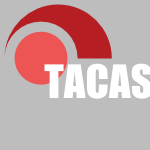 TACAS-2009-KuglerS #composition #specification #synthesis
TACAS-2009-KuglerS #composition #specification #synthesis- Compositional Synthesis of Reactive Systems from Live Sequence Chart Specifications (HK, IS), pp. 77–91.
 GT-VMT-2006-HermannET08 #diagrams #graph grammar #inheritance #syntax #uml
GT-VMT-2006-HermannET08 #diagrams #graph grammar #inheritance #syntax #uml- A Typed Attributed Graph Grammar with Inheritance for the Abstract Syntax of UML Class and Sequence Diagrams (FH, HE, GT), pp. 261–269.
 GT-VMT-2008-KumarM #automaton #verification
GT-VMT-2008-KumarM #automaton #verification- Improving Live Sequence Chart to Automata Transformation for Verification (RK, EGM).
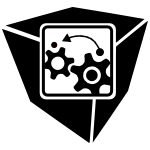 SOFTVIS-2008-XieKSDF #diagrams
SOFTVIS-2008-XieKSDF #diagrams- Assessing the benefits of synchronization-adorned sequence diagrams: two controlled experiments (SX, EK, REKS, LKD, SDF), pp. 9–18.
 EDOC-2008-AmeedeenB #approach #diagrams #modelling #petri net
EDOC-2008-AmeedeenB #approach #diagrams #modelling #petri net- A Model Driven Approach to Represent Sequence Diagrams as Free Choice Petri Nets (MAA, BB), pp. 213–221.
 ECMDA-FA-2008-OldevikH #aspect-oriented #diagrams #semantics
ECMDA-FA-2008-OldevikH #aspect-oriented #diagrams #semantics- Semantics Preservation of Sequence Diagram Aspects (JO, ØH), pp. 215–230.
 ICMT-2008-GronmoSMK #diagrams #semantics #uml #weaving
ICMT-2008-GronmoSMK #diagrams #semantics #uml #weaving- Semantics-Based Weaving of UML Sequence Diagrams (RG, FS, BMP, SK), pp. 122–136.
 MoDELS-2008-GeneroCCAIC #comprehension #diagrams #empirical #uml
MoDELS-2008-GeneroCCAIC #comprehension #diagrams #empirical #uml- Assessing the Influence of Stereotypes on the Comprehension of UML Sequence Diagrams: A Controlled Experiment (MG, JACL, DC, SMA, EI, JÁC), pp. 280–294.
 MoDELS-2008-GeneroCCAIC #comprehension #diagrams #empirical #uml
MoDELS-2008-GeneroCCAIC #comprehension #diagrams #empirical #uml- Assessing the Influence of Stereotypes on the Comprehension of UML Sequence Diagrams: A Controlled Experiment (MG, JACL, DC, SMA, EI, JÁC), pp. 280–294.
 RE-2008-Kof #generative
RE-2008-Kof #generative- From Textual Scenarios to Message Sequence Charts: Inclusion of Condition Generation and Actor Extraction (LK), pp. 331–332.
 ICSE-2008-SibayUB #revisited
ICSE-2008-SibayUB #revisited- Existential live sequence charts revisited (GES, SU, VAB), pp. 41–50.
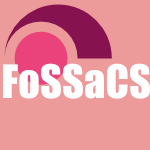 FoSSaCS-2008-DarondeauGH
FoSSaCS-2008-DarondeauGH - Products of Message Sequence Charts (PD, BG, LH), pp. 458–473.
 ICPC-2007-XieKS #comprehension #concurrent #diagrams #empirical #evaluation #interactive #thread #uml
ICPC-2007-XieKS #comprehension #concurrent #diagrams #empirical #evaluation #interactive #thread #uml- Empirical Evaluation of a UML Sequence Diagram with Adornments to Support Understanding of Thread Interactions (SX, EK, REKS), pp. 123–134.
 SEFM-2007-DanHC #diagrams #semantics #thread
SEFM-2007-DanHC #diagrams #semantics #thread- A Thread-tag Based Semantics for Sequence Diagrams (HD, RMH, SC), pp. 173–182.
 ESEC-FSE-2007-RoychoudhuryGS
ESEC-FSE-2007-RoychoudhuryGS - Symbolic message sequence charts (AR, AG, BS), pp. 275–284.
 FASE-2007-HarelKM #compilation #diagrams #multi #named #uml
FASE-2007-HarelKM #compilation #diagrams #multi #named #uml- S2A: A Compiler for Multi-modal UML Sequence Diagrams (DH, AK, SM), pp. 121–124.
 TACAS-2007-ElkindGP #detection
TACAS-2007-ElkindGP #detection- Detecting Races in Ensembles of Message Sequence Charts (EE, BG, DP), pp. 420–434.
 FM-2006-LundS #diagrams #semantics #uml
FM-2006-LundS #diagrams #semantics #uml- A Fully General Operational Semantics for UML 2.0 Sequence Diagrams with Potential and Mandatory Choice (MSL, KS), pp. 380–395.
 FASE-2006-WestphalT
FASE-2006-WestphalT - The Good, the Bad and the Ugly: Well-Formedness of Live Sequence Charts (BW, TT), pp. 230–246.
 CAV-2006-KloseTWW #performance #verification
CAV-2006-KloseTWW #performance #verification- Check It Out: On the Efficient Formal Verification of Live Sequence Charts (JK, TT, BW, HW), pp. 219–233.
 PASTE-2005-RountevVR #analysis #control flow #diagrams #reverse engineering #uml
PASTE-2005-RountevVR #analysis #control flow #diagrams #reverse engineering #uml- Static control-flow analysis for reverse engineering of UML sequence diagrams (AR, OV, MR), pp. 96–102.
 IFM-2005-LamP #consistency #diagrams #statechart #using #π-calculus
IFM-2005-LamP #consistency #diagrams #statechart #using #π-calculus- Consistency Checking of Sequence Diagrams and Statechart Diagrams Using the π-Calculus (VSWL, JAP), pp. 347–365.
 VISSOFT-2005-SharpR #diagrams #interactive #uml
VISSOFT-2005-SharpR #diagrams #interactive #uml- Interactive Exploration of UML Sequence Diagrams (RS, AR), pp. 8–13.
 SEKE-2005-KrishnaG #concept #diagrams #modelling #uml
SEKE-2005-KrishnaG #concept #diagrams #modelling #uml- Combining Agent-oriented Conceptual Modelling and the UML Sequence Diagram (AK, AKG), pp. 205–210.
 ECMDA-FA-2005-GarousiBL #analysis #control flow #diagrams #uml
ECMDA-FA-2005-GarousiBL #analysis #control flow #diagrams #uml- Control Flow Analysis of UML 2.0 Sequence Diagrams (VG, LCB, YL), pp. 160–174.
 MoDELS-2005-DeublerMRK #diagrams #modelling #uml
MoDELS-2005-DeublerMRK #diagrams #modelling #uml- Modeling Crosscutting Services with UML Sequence Diagrams (MD, MM, SR, IK), pp. 522–536.
 MoDELS-2005-DeublerMRK #diagrams #modelling #uml
MoDELS-2005-DeublerMRK #diagrams #modelling #uml- Modeling Crosscutting Services with UML Sequence Diagrams (MD, MM, SR, IK), pp. 522–536.
 ESEC-FSE-2005-BakerBJKTMB #detection #diagrams #semantics #uml
ESEC-FSE-2005-BakerBJKTMB #detection #diagrams #semantics #uml- Detecting and resolving semantic pathologies in UML sequence diagrams (PB, PB, CJ, DJK, RT, BM, SB), pp. 50–59.
 ICSE-2005-RountevC #analysis #diagrams
ICSE-2005-RountevC #analysis #diagrams- Object naming analysis for reverse-engineered sequence diagrams (AR, BHC), pp. 254–263.
 FASE-2005-RountevKS #diagrams #interactive #test coverage #testing
FASE-2005-RountevKS #diagrams #interactive #test coverage #testing- Coverage Criteria for Testing of Object Interactions in Sequence Diagrams (AR, SK, JS), pp. 289–304.
 FoSSaCS-2005-BontempsS #complexity
FoSSaCS-2005-BontempsS #complexity- The Complexity of Live Sequence Charts (YB, PYS), pp. 364–378.
 TACAS-2005-Genest #composition
TACAS-2005-Genest #composition- Compositional Message Sequence Charts (CMSCs) Are Better to Implement Than MSCs (BG), pp. 429–444.
 IFM-2004-PickinJ #diagrams #uml #using
IFM-2004-PickinJ #diagrams #uml #using- Using UML Sequence Diagrams as the Basis for a Formal Test Description Language (SP, JMJ), pp. 481–500.
 WCRE-2003-BriandLM #diagrams #reverse engineering #towards #uml
WCRE-2003-BriandLM #diagrams #reverse engineering #towards #uml- Towards the Reverse Engineering of UML Sequence Diagrams (LCB, YL, YM), pp. 57–66.
 AGTIVE-2003-CordesHK #collaboration #diagrams #interactive #uml
AGTIVE-2003-CordesHK #collaboration #diagrams #interactive #uml- UML Interaction Diagrams: Correct Translation of Sequence Diagrams into Collaboration Diagrams (BC, KH, HJK), pp. 275–291.
 RE-2003-SenguptaC #modelling #requirements #using
RE-2003-SenguptaC #modelling #requirements #using- Refinement-Based Requirements Modeling Using TriggeredMessage Sequence Charts (BS, RC), pp. 95–104.
 CAV-2003-SenguptaC #named
CAV-2003-SenguptaC #named- TRIM: A Tool for Triggered Message Sequence Charts (BS, RC), pp. 106–109.
 IWPC-2002-BurdOW #animation #comprehension #diagrams #using
IWPC-2002-BurdOW #animation #comprehension #diagrams #using- Evaluating Using Animation to Improve Understanding of Sequence Diagrams (EB, DO, AW), pp. 107–113.
 SEKE-2002-LeeKC #finite #interactive #state machine #testing
SEKE-2002-LeeKC #finite #interactive #state machine #testing- Construction of global finite state machine for testing task interactions written in message sequence charts (NHL, THK, SDC), pp. 369–376.
 OOPSLA-2002-MarellyHK #execution #multi
OOPSLA-2002-MarellyHK #execution #multi- Multiple instances and symbolic variables in executable sequence charts (RM, DH, HK), pp. 83–100.
 ASE-2002-FraikinL #diagrams #named #testing
ASE-2002-FraikinL #diagrams #named #testing- SeDiTeC — Testing Based on Sequence Diagrams (FF, TL), pp. 261–266.
 FSE-2002-SenguptaC
FSE-2002-SenguptaC - Triggered message sequence charts (BS, RC), pp. 167–176.
 ICSE-2002-BlausteinOB #graph
ICSE-2002-BlausteinOB #graph- Observing timed systems by means of message sequence chart graphs (SB, FO, VAB), p. 707.
 ICALP-2001-MuschollP #communication #finite #protocol
ICALP-2001-MuschollP #communication #finite #protocol- From Finite State Communication Protocols to High-Level Message Sequence Charts (AM, DP), pp. 720–731.
 GT-VMT-2001-Tsiolakis #diagrams #uml
GT-VMT-2001-Tsiolakis #diagrams #uml- Integrating Model Information in UML Sequence Diagrams (AT), pp. 266–274.
 SVIS-2001-OechsleS #automation #debugging #diagrams #interface #java #named #using #visualisation
SVIS-2001-OechsleS #automation #debugging #diagrams #interface #java #named #using #visualisation- JAVAVIS: Automatic Program Visualization with Object and Sequence Diagrams Using the Java Debug Interface (JDI) (RO, TS), pp. 176–190.
 UML-2001-LatronicoK #diagrams #embedded #formal method #representation
UML-2001-LatronicoK #diagrams #embedded #formal method #representation- Representing Embedded System Sequence Diagrams as a Formal Language (EL, PK), pp. 302–316.
 TOOLS-USA-2001-SelonenSK #diagrams #generative #implementation #uml
TOOLS-USA-2001-SelonenSK #diagrams #generative #implementation #uml- Generating Structured Implementation Schemes from UML Sequence Diagrams (PS, TS, KK), pp. 317–330.
 ESEC-FSE-2001-UchitelKM #detection #specification
ESEC-FSE-2001-UchitelKM #detection #specification- Detecting implied scenarios in message sequence chart specifications (SU, JK, JM), pp. 74–82.
 FoSSaCS-2001-Morin #on the #traceability
FoSSaCS-2001-Morin #on the #traceability- On Regular Message Sequence Chart Languages and Relationships to Mazurkiewicz Trace Theory (RM), pp. 332–346.
 TACAS-2001-GunterMP #composition
TACAS-2001-GunterMP #composition- Compositional Message Sequence Charts (ELG, AM, DP), pp. 496–511.
 TACAS-2001-KloseW #automaton
TACAS-2001-KloseW #automaton- An Automata Based Interpretation of Live Sequence Charts (JK, HW), pp. 512–527.
 UML-2000-GraubmannR #case study #diagrams #modelling #testing
UML-2000-GraubmannR #case study #diagrams #modelling #testing- HyperMSCs and Sequence Diagrams for Use Case Modelling and Testing (PG, ER), pp. 32–46.
 UML-2000-PetriuS #behaviour #consistency #diagrams #process #representation
UML-2000-PetriuS #behaviour #consistency #diagrams #process #representation- Consistent Behaviour Representation in Activity and Sequence Diagrams (DCP, YS), pp. 369–382.
 ASE-2000-Li #case study #diagrams
ASE-2000-Li #case study #diagrams- Translating Use Cases to Sequence Diagrams (LL), pp. 293–296.
 ICSE-2000-AlurEY
ICSE-2000-AlurEY - Inference of message sequence charts (RA, KE, MY), pp. 304–313.
 UML-1999-FirleyHDGG #analysis #case study #diagrams
UML-1999-FirleyHDGG #analysis #case study #diagrams- Timed Sequence Diagrams and Tool-Based Analysis — A Case Study (TF, MH, KD, TG, UG), pp. 645–660.
 UML-1999-LiL #analysis #diagrams #uml
UML-1999-LiL #analysis #diagrams #uml- Timing Analysis of UML Sequence Diagrams (XL, JL), pp. 661–674.
 TOOLS-EUROPE-1999-Li #approach #automation #case study #diagrams
TOOLS-EUROPE-1999-Li #approach #automation #case study #diagrams- A Semi-Automatic Approach to Translating Use Cases to Sequence Diagrams (LL), pp. 184–193.
 FoSSaCS-1999-Muscholl #specification
FoSSaCS-1999-Muscholl #specification- Matching Specifications for Message Sequence Charts (AM), pp. 273–287.
 UML-1998-SeemannG #diagrams #realtime #uml
UML-1998-SeemannG #diagrams #realtime #uml- Extension of UML Sequence Diagrams for Real-Time Systems (JS, JWvG), pp. 240–252.
 ASE-1998-LeueMR #architecture #specification
ASE-1998-LeueMR #architecture #specification- Synthesizing Software Architecture Descriptions from Message Sequence Chart Specifications (SL, LM, MR), pp. 192–195.
 FoSSaCS-1998-MuschollPS
FoSSaCS-1998-MuschollPS - Deciding Properties for Message Sequence Charts (AM, DP, ZS), pp. 226–242.
 CAV-1998-Peled98a #tool support
CAV-1998-Peled98a #tool support- A Toolset for Message Sequence Charts (DP), pp. 532–536.
 TACAS-1997-Ben-AbdallahL #detection #process
TACAS-1997-Ben-AbdallahL #detection #process- Syntactic Detection of Process Divergence and Non-local Choice inMessage Sequence Charts (HBA, SL), pp. 259–274.
 TAPSOFT-1997-LevinP #verification
TAPSOFT-1997-LevinP #verification- Verification of Message Sequence Charts via Template Matching (VL, DAP), pp. 652–666.
 WPC-1996-EickW #interactive #visualisation
WPC-1996-EickW #interactive #visualisation- An Interactive Visualization for Message Sequence Charts (SGE, AW), pp. 2–7.
 TACAS-1996-AlurHP
TACAS-1996-AlurHP - An Analyser for Mesage Sequence Charts (RA, GJH, DP), pp. 35–48.
 ASF+SDF-1995-MauwMa #specification #tool support
ASF+SDF-1995-MauwMa #specification #tool support- Specification of Tools for Message Sequence Charts (SM, EAvdM), pp. 175–210.
 ICPC-2018-LyuNK #diagrams #named #tool support
ICPC-2018-LyuNK #diagrams #named #tool support FASE-2017-AlvinPM #diagrams #generative #named #uml
FASE-2017-AlvinPM #diagrams #generative #named #uml CSEET-2016-SrinivasanLY #comprehension #diagrams #object-oriented #programming #using
CSEET-2016-SrinivasanLY #comprehension #diagrams #object-oriented #programming #using ICPC-2016-SrinivasanYL #case study #comprehension #diagrams
ICPC-2016-SrinivasanYL #case study #comprehension #diagrams SAC-2015-KimL #diagrams #qvt #using
SAC-2015-KimL #diagrams #qvt #using ICEIS-v2-2014-MarcolinoOG #approach #diagrams #effectiveness #towards #variability
ICEIS-v2-2014-MarcolinoOG #approach #diagrams #effectiveness #towards #variability SLE-2014-KaufmannKPSW #debugging #diagrams #satisfiability #state machine
SLE-2014-KaufmannKPSW #debugging #diagrams #satisfiability #state machine CSMR-2013-ScannielloGT #comprehension #diagrams #source code
CSMR-2013-ScannielloGT #comprehension #diagrams #source code GT-VMT-2013-GreenyerBM #diagrams #specification
GT-VMT-2013-GreenyerBM #diagrams #specification SEKE-2013-YoonMPP #diagrams #reverse engineering
SEKE-2013-YoonMPP #diagrams #reverse engineering ICTSS-2013-FariaPC #consistency #diagrams #testing #tool support #uml
ICTSS-2013-FariaPC #consistency #diagrams #testing #tool support #uml REFSQ-2012-RaspotnigO #analysis #case study #diagrams
REFSQ-2012-RaspotnigO #analysis #case study #diagrams SAC-2012-Longuet #testing
SAC-2012-Longuet #testing SLE-2012-WidlBBEHKST #diagrams
SLE-2012-WidlBBEHKST #diagrams SCAM-2011-RoubtsovSMB #diagrams #enterprise #java #named #reverse engineering
SCAM-2011-RoubtsovSMB #diagrams #enterprise #java #named #reverse engineering AGTIVE-2011-GreenyerR #automaton #concept #diagrams #game studies #graph grammar #specification
AGTIVE-2011-GreenyerR #automaton #concept #diagrams #game studies #graph grammar #specification ICMT-J-2010-GronmoM11 #diagrams #graph transformation #state machine #uml
ICMT-J-2010-GronmoM11 #diagrams #graph transformation #state machine #uml ICST-2011-DanH #consistency #testing
ICST-2011-DanH #consistency #testing WCRE-2010-GratiSP #diagrams #execution #interactive #using #visualisation
WCRE-2010-GratiSP #diagrams #execution #interactive #using #visualisation CAiSE-2010-StalhaneSB #analysis #case study #diagrams #safety
CAiSE-2010-StalhaneSB #analysis #case study #diagrams #safety SEKE-2010-ParkHK #diagrams #uml #verification
SEKE-2010-ParkHK #diagrams #uml #verification ECMFA-2010-KessentiniBSB #diagrams #heuristic #petri net #using
ECMFA-2010-KessentiniBSB #diagrams #heuristic #petri net #using ICMT-2010-GronmoM #diagrams #graph transformation #state machine
ICMT-2010-GronmoM #diagrams #graph transformation #state machine WCRE-1999-SerebrenikRRB99a #diagrams #enterprise #java #reverse engineering
WCRE-1999-SerebrenikRRB99a #diagrams #enterprise #java #reverse engineering ASE-2009-ZhangGTL #probability #syntax
ASE-2009-ZhangGTL #probability #syntax SAC-2009-AndradeMCNA #constraints #diagrams #embedded #energy #petri net #realtime #uml #validation
SAC-2009-AndradeMCNA #constraints #diagrams #embedded #energy #petri net #realtime #uml #validation TACAS-2009-KuglerS #composition #specification #synthesis
TACAS-2009-KuglerS #composition #specification #synthesis GT-VMT-2006-HermannET08 #diagrams #graph grammar #inheritance #syntax #uml
GT-VMT-2006-HermannET08 #diagrams #graph grammar #inheritance #syntax #uml GT-VMT-2008-KumarM #automaton #verification
GT-VMT-2008-KumarM #automaton #verification SOFTVIS-2008-XieKSDF #diagrams
SOFTVIS-2008-XieKSDF #diagrams EDOC-2008-AmeedeenB #approach #diagrams #modelling #petri net
EDOC-2008-AmeedeenB #approach #diagrams #modelling #petri net ECMDA-FA-2008-OldevikH #aspect-oriented #diagrams #semantics
ECMDA-FA-2008-OldevikH #aspect-oriented #diagrams #semantics ICMT-2008-GronmoSMK #diagrams #semantics #uml #weaving
ICMT-2008-GronmoSMK #diagrams #semantics #uml #weaving MoDELS-2008-GeneroCCAIC #comprehension #diagrams #empirical #uml
MoDELS-2008-GeneroCCAIC #comprehension #diagrams #empirical #uml MoDELS-2008-GeneroCCAIC #comprehension #diagrams #empirical #uml
MoDELS-2008-GeneroCCAIC #comprehension #diagrams #empirical #uml RE-2008-Kof #generative
RE-2008-Kof #generative ICSE-2008-SibayUB #revisited
ICSE-2008-SibayUB #revisited FoSSaCS-2008-DarondeauGH
FoSSaCS-2008-DarondeauGH  ICPC-2007-XieKS #comprehension #concurrent #diagrams #empirical #evaluation #interactive #thread #uml
ICPC-2007-XieKS #comprehension #concurrent #diagrams #empirical #evaluation #interactive #thread #uml SEFM-2007-DanHC #diagrams #semantics #thread
SEFM-2007-DanHC #diagrams #semantics #thread ESEC-FSE-2007-RoychoudhuryGS
ESEC-FSE-2007-RoychoudhuryGS  FASE-2007-HarelKM #compilation #diagrams #multi #named #uml
FASE-2007-HarelKM #compilation #diagrams #multi #named #uml TACAS-2007-ElkindGP #detection
TACAS-2007-ElkindGP #detection FM-2006-LundS #diagrams #semantics #uml
FM-2006-LundS #diagrams #semantics #uml FASE-2006-WestphalT
FASE-2006-WestphalT  CAV-2006-KloseTWW #performance #verification
CAV-2006-KloseTWW #performance #verification PASTE-2005-RountevVR #analysis #control flow #diagrams #reverse engineering #uml
PASTE-2005-RountevVR #analysis #control flow #diagrams #reverse engineering #uml IFM-2005-LamP #consistency #diagrams #statechart #using #π-calculus
IFM-2005-LamP #consistency #diagrams #statechart #using #π-calculus VISSOFT-2005-SharpR #diagrams #interactive #uml
VISSOFT-2005-SharpR #diagrams #interactive #uml SEKE-2005-KrishnaG #concept #diagrams #modelling #uml
SEKE-2005-KrishnaG #concept #diagrams #modelling #uml ECMDA-FA-2005-GarousiBL #analysis #control flow #diagrams #uml
ECMDA-FA-2005-GarousiBL #analysis #control flow #diagrams #uml MoDELS-2005-DeublerMRK #diagrams #modelling #uml
MoDELS-2005-DeublerMRK #diagrams #modelling #uml MoDELS-2005-DeublerMRK #diagrams #modelling #uml
MoDELS-2005-DeublerMRK #diagrams #modelling #uml ESEC-FSE-2005-BakerBJKTMB #detection #diagrams #semantics #uml
ESEC-FSE-2005-BakerBJKTMB #detection #diagrams #semantics #uml ICSE-2005-RountevC #analysis #diagrams
ICSE-2005-RountevC #analysis #diagrams FASE-2005-RountevKS #diagrams #interactive #test coverage #testing
FASE-2005-RountevKS #diagrams #interactive #test coverage #testing FoSSaCS-2005-BontempsS #complexity
FoSSaCS-2005-BontempsS #complexity TACAS-2005-Genest #composition
TACAS-2005-Genest #composition IFM-2004-PickinJ #diagrams #uml #using
IFM-2004-PickinJ #diagrams #uml #using WCRE-2003-BriandLM #diagrams #reverse engineering #towards #uml
WCRE-2003-BriandLM #diagrams #reverse engineering #towards #uml AGTIVE-2003-CordesHK #collaboration #diagrams #interactive #uml
AGTIVE-2003-CordesHK #collaboration #diagrams #interactive #uml RE-2003-SenguptaC #modelling #requirements #using
RE-2003-SenguptaC #modelling #requirements #using CAV-2003-SenguptaC #named
CAV-2003-SenguptaC #named IWPC-2002-BurdOW #animation #comprehension #diagrams #using
IWPC-2002-BurdOW #animation #comprehension #diagrams #using SEKE-2002-LeeKC #finite #interactive #state machine #testing
SEKE-2002-LeeKC #finite #interactive #state machine #testing OOPSLA-2002-MarellyHK #execution #multi
OOPSLA-2002-MarellyHK #execution #multi ASE-2002-FraikinL #diagrams #named #testing
ASE-2002-FraikinL #diagrams #named #testing FSE-2002-SenguptaC
FSE-2002-SenguptaC  ICSE-2002-BlausteinOB #graph
ICSE-2002-BlausteinOB #graph ICALP-2001-MuschollP #communication #finite #protocol
ICALP-2001-MuschollP #communication #finite #protocol GT-VMT-2001-Tsiolakis #diagrams #uml
GT-VMT-2001-Tsiolakis #diagrams #uml SVIS-2001-OechsleS #automation #debugging #diagrams #interface #java #named #using #visualisation
SVIS-2001-OechsleS #automation #debugging #diagrams #interface #java #named #using #visualisation UML-2001-LatronicoK #diagrams #embedded #formal method #representation
UML-2001-LatronicoK #diagrams #embedded #formal method #representation TOOLS-USA-2001-SelonenSK #diagrams #generative #implementation #uml
TOOLS-USA-2001-SelonenSK #diagrams #generative #implementation #uml ESEC-FSE-2001-UchitelKM #detection #specification
ESEC-FSE-2001-UchitelKM #detection #specification FoSSaCS-2001-Morin #on the #traceability
FoSSaCS-2001-Morin #on the #traceability TACAS-2001-GunterMP #composition
TACAS-2001-GunterMP #composition TACAS-2001-KloseW #automaton
TACAS-2001-KloseW #automaton UML-2000-GraubmannR #case study #diagrams #modelling #testing
UML-2000-GraubmannR #case study #diagrams #modelling #testing UML-2000-PetriuS #behaviour #consistency #diagrams #process #representation
UML-2000-PetriuS #behaviour #consistency #diagrams #process #representation ASE-2000-Li #case study #diagrams
ASE-2000-Li #case study #diagrams ICSE-2000-AlurEY
ICSE-2000-AlurEY  UML-1999-FirleyHDGG #analysis #case study #diagrams
UML-1999-FirleyHDGG #analysis #case study #diagrams UML-1999-LiL #analysis #diagrams #uml
UML-1999-LiL #analysis #diagrams #uml TOOLS-EUROPE-1999-Li #approach #automation #case study #diagrams
TOOLS-EUROPE-1999-Li #approach #automation #case study #diagrams FoSSaCS-1999-Muscholl #specification
FoSSaCS-1999-Muscholl #specification UML-1998-SeemannG #diagrams #realtime #uml
UML-1998-SeemannG #diagrams #realtime #uml ASE-1998-LeueMR #architecture #specification
ASE-1998-LeueMR #architecture #specification FoSSaCS-1998-MuschollPS
FoSSaCS-1998-MuschollPS  CAV-1998-Peled98a #tool support
CAV-1998-Peled98a #tool support TACAS-1997-Ben-AbdallahL #detection #process
TACAS-1997-Ben-AbdallahL #detection #process TAPSOFT-1997-LevinP #verification
TAPSOFT-1997-LevinP #verification WPC-1996-EickW #interactive #visualisation
WPC-1996-EickW #interactive #visualisation TACAS-1996-AlurHP
TACAS-1996-AlurHP  ASF+SDF-1995-MauwMa #specification #tool support
ASF+SDF-1995-MauwMa #specification #tool support











